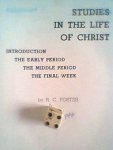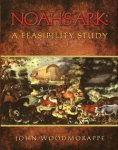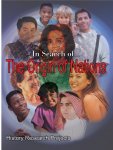Sorry for the second post.... the short, short editing time allowed here really restricts some things.
*********************
Book Review: The Jesus Driven Life: Reconnecting Humanity with Jesus by Michael Hardin
September 30, 2013 by Adam Ericksen
[Join our live chat with Michael Hardin of Preaching Peace on Patheos’s premium content channel Teaching Nonviolent Atonement this Thursday at 11:00 central. We will discuss mimetic theory and the upcoming second edition of Michael’s book The Jesus Drive Life: Reconnecting Humanity with Jesus, with a special emphasis on two new chapters, one on the Letter to the Hebrews and the other on the Revelation to John.]
The landscape of American Christianity, indeed, of world Christianity, is changing. Of that there can be no doubt. Terms like “postmodern Christianity” and “emergent Christianity” permeate our culture. Unfortunately, while few people actually know what these terms mean, there is a palpable sense that change is afoot. That change scares many, while it excites others.
In his book The Jesus Driven Life, Michael Hardin explores the transformation Christianity is experiencing today. He has one primary answer for the many dilemmas facing 21st century Christians. That answer is simple, but far from simplistic. The answer, of course, is Jesus. And that’s the obvious answer – middle school youth groups throughout the United States (including mine!) implicitly know the answer to difficult questions posed in youth group meetings is always an emphatic . . . “Jesus!” Unfortunately, the wisdom of our middle school students has become blurred in American Christianity. This is one of Michael’s greatest points, as he argues that North American Christianity has a “theology (a doctrine of God) without a Christology (a doctrine of Jesus)” (157).
The problem of a Christless Christianity is nothing new. For much of its history, Christianity has scapegoated Jesus right out of the Gospel. We have unconsciously replaced the God of Jesus with what Michael terms a “Janus faced god.” I think this term is very helpful, for Janus was a Roman god with two faces that looked in opposite directions. The two faces of Janus symbolized the god’s dual will to violence and to peace.
The spirit of Janus infects all of human culture. Indeed, it even infects the Bible. Using the insights of mimetic theory, or mimetic realism, Michael makes a cogent and a very understandable case that humans project our own violence onto God, or the gods. This process justifies our use of violence against one another, for if the gods are violent, our violence is justified, too.
Michael points out that, despite the biblical affirmation that God is One (Deut 6:4), the people who wrote the Bible often fell into a Janus faced view of God. This is one of the strongest aspects of The Jesus Driven Life. Michael doesn’t run away from the violence in the Bible, but offers a way to interpret that violence. For Christians, the answer is not our own interpretation of the Bible, but to interpret the Bible through the lens of Jesus. If we neglect Jesus in favor of our own interpretation, we will succumb to the spirit of Janus. (Sola scriptura no longer works!) Michael claims, “As far as I am concerned, in Christianity, it is all about Jesus or it is about nothing” (273).
Throughout his life, death, and resurrection, Jesus finally and concretely reveals that God is One and thus does not have a dual will. Rather, God’s will is love. For example, when Jesus was asked which commandment in the Law is the greatest, he replied, “‘You shall love the Lord your God with all your heart and with all your soul and with all your mind.’ This is the greatest and first commandment. And a second is like it: ‘You shall love your neighbor as yourself.’ On these two commandments hang all the law and the prophets” (Matthew 22:36-40). Michael reflects on this move that Jesus makes in the transformation of the human understanding of God from a Janus faced god to the Abba of Jesus, stating, “God is not a mixture of yin and yang, good and evil, terror and love. God is consistent with God’s self. The gods of our theologies might be mixed up, but the one who made the heavens and the earth is and always will be the One we are called to love because God is Love” (35).
Placing Jesus at the center of our lives changes the way we understand not only the Bible, but also our personal lives, our relationship with others, and our relationship with the world. Let me provide an example. I know Michael, and I think he would appreciate me saying this: Michael is no saint. He has no pretense to holiness. But Michael knows something at the core of his being. He knows that Jesus changes everything. I once asked Michael how he could be so sure that there is no wrath in God, but that God’s only desire is love. “Brother,” that’s one of his favorite terms, “I know God is love because I trust Jesus.”
Indeed, when Christians begin to trust in the all-embracing love of God revealed in Jesus, the world will be transformed. I hope and pray that The Jesus Driven Life will become a primary guide for Christians as we continue to move into the 21st century.
(You can purchase The Jesus Driven Life, and the companion DVD series at Preaching Peace or at Amazon.)
 Alongside with that even though I've just (re?)started, I'm investing time on reading the Old Testament. Still on Genesis.
Alongside with that even though I've just (re?)started, I'm investing time on reading the Old Testament. Still on Genesis.


